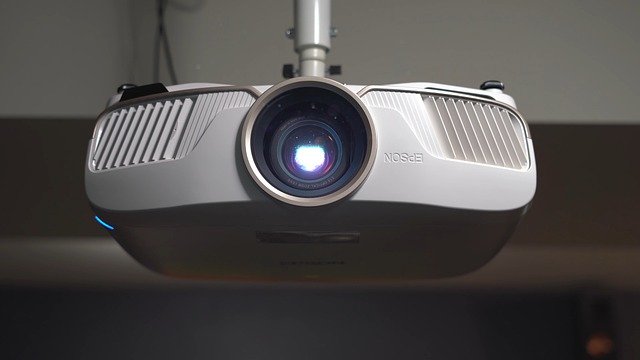Understanding Reverse Mortgages: A Financial Tool for Seniors
A reverse mortgage is a unique financial product designed specifically for homeowners aged 62 and older. This type of loan allows seniors to convert a portion of their home equity into cash, providing additional income during retirement without the need to sell their home or make monthly mortgage payments. As the population ages and retirement costs rise, reverse mortgages have gained attention as a potential solution for financial stability in later years.

The most common type of reverse mortgage is the Home Equity Conversion Mortgage (HECM), which is insured by the Federal Housing Administration (FHA). This insurance protects both the lender and the borrower, ensuring that the loan will be repaid even if the home’s value decreases over time.
Who is eligible for a reverse mortgage?
Eligibility for a reverse mortgage is based on several factors:
-
Age: The primary borrower must be at least 62 years old.
-
Home ownership: The applicant must own their home outright or have a significant amount of equity.
-
Primary residence: The home must be the borrower’s primary residence.
-
Financial assessment: Lenders will evaluate the borrower’s ability to pay property taxes, insurance, and maintain the home.
-
Property type: Most single-family homes, condominiums, and manufactured homes that meet FHA requirements are eligible.
It’s important to note that while these are general requirements, specific lenders may have additional criteria for approval.
What are the benefits of a reverse mortgage?
Reverse mortgages can offer several advantages for eligible seniors:
-
Supplemental income: The loan can provide a steady stream of income to cover living expenses, healthcare costs, or other financial needs.
-
No monthly mortgage payments: As long as the borrower lives in the home and meets loan obligations, no monthly mortgage payments are required.
-
Flexible payment options: Borrowers can choose to receive funds as a lump sum, fixed monthly payments, a line of credit, or a combination of these options.
-
Non-recourse loan: The borrower or their heirs will never owe more than the home’s value when the loan becomes due.
-
Retain homeownership: Seniors can access their home equity without selling their property or giving up ownership.
What are the potential drawbacks of a reverse mortgage?
While reverse mortgages can be beneficial, they also come with potential risks and considerations:
-
Accumulating interest: The loan balance grows over time as interest accrues, potentially leaving less equity for heirs.
-
Fees and costs: Reverse mortgages often have higher upfront costs compared to traditional mortgages.
-
Impact on government benefits: The loan proceeds may affect eligibility for needs-based government programs like Medicaid.
-
Maintenance responsibilities: Borrowers must continue to pay property taxes, insurance, and maintain the home to avoid loan default.
-
Complexity: Reverse mortgages can be complex financial products, requiring careful consideration and understanding.
How does a reverse mortgage fit into retirement planning?
Incorporating a reverse mortgage into retirement planning requires careful consideration of one’s overall financial situation. For some seniors, a reverse mortgage can be a valuable tool to:
-
Delay Social Security benefits: Using reverse mortgage proceeds early in retirement may allow seniors to postpone claiming Social Security, potentially increasing their benefit amount.
-
Preserve investment accounts: By tapping into home equity, retirees may be able to leave their investment portfolios untouched during market downturns.
-
Cover unexpected expenses: A reverse mortgage line of credit can serve as an emergency fund for unforeseen costs.
-
Age in place: The additional income can help seniors afford necessary home modifications or in-home care services.
However, it’s crucial to consult with a financial advisor to determine if a reverse mortgage aligns with one’s long-term financial goals and retirement strategy.
What are the costs associated with reverse mortgages?
Reverse mortgages come with various costs that borrowers should be aware of:
-
Origination fee: Lenders may charge up to $6,000, depending on the home’s value.
-
Mortgage insurance premium: For HECMs, there’s an upfront premium of 2% of the home’s value and an annual premium of 0.5% of the outstanding balance.
-
Appraisal fee: Typically ranges from $300 to $500.
-
Closing costs: These can include title search, insurance, and other fees similar to traditional mortgages.
-
Servicing fees: Some lenders charge monthly fees for account management.
| Cost Type | Typical Range |
|---|---|
| Origination Fee | Up to $6,000 |
| Upfront Mortgage Insurance Premium | 2% of home’s value |
| Annual Mortgage Insurance Premium | 0.5% of outstanding balance |
| Appraisal Fee | $300 - $500 |
| Closing Costs | Varies (similar to traditional mortgages) |
Prices, rates, or cost estimates mentioned in this article are based on the latest available information but may change over time. Independent research is advised before making financial decisions.
Reverse mortgages can be a valuable financial tool for seniors looking to supplement their retirement income or manage unexpected expenses. However, they are not suitable for everyone. The decision to pursue a reverse mortgage should be made after careful consideration of one’s financial situation, long-term goals, and alternatives. Prospective borrowers are encouraged to seek advice from financial professionals and HUD-approved counselors to fully understand the implications of this complex financial product.






